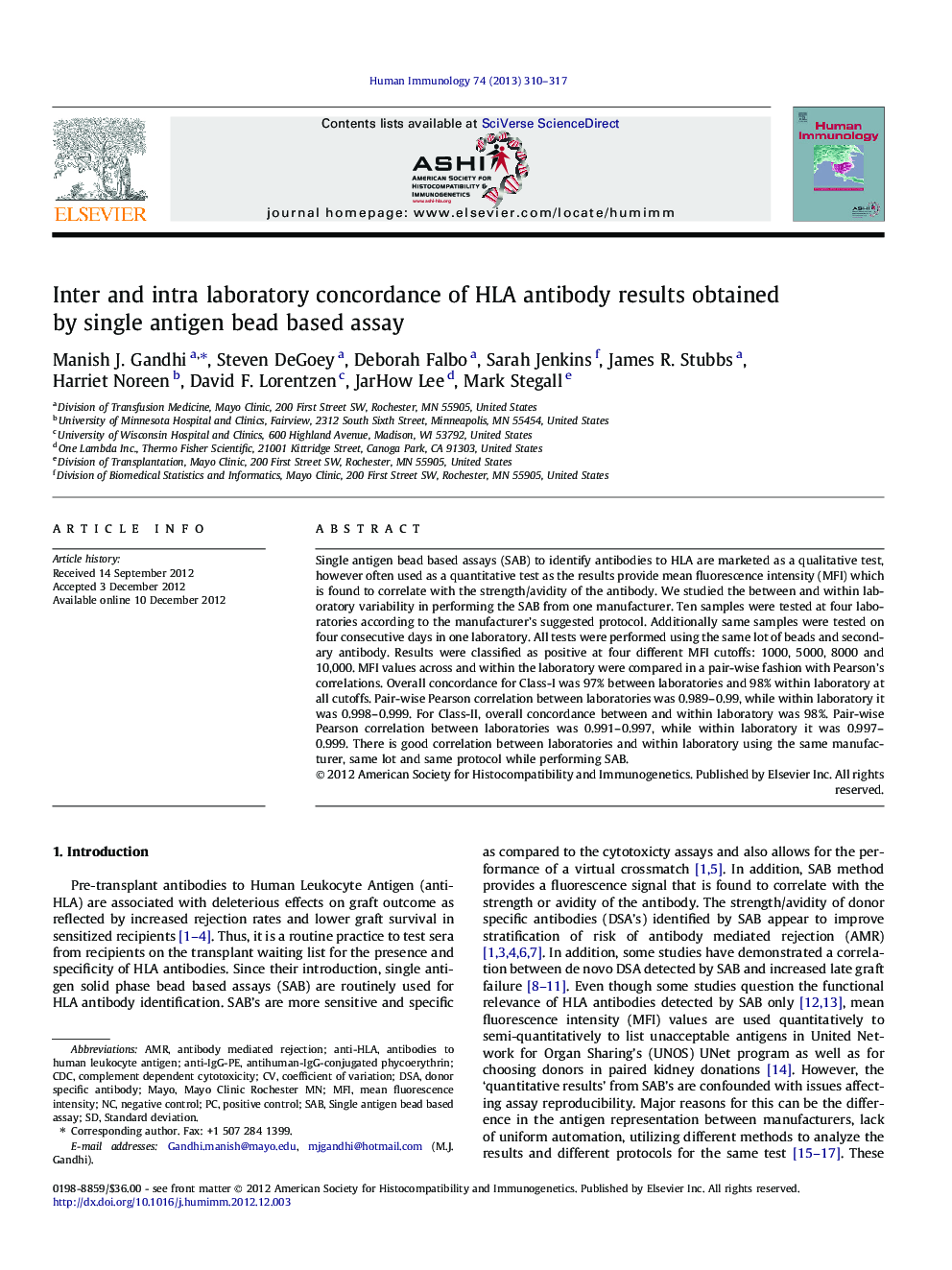| Article ID | Journal | Published Year | Pages | File Type |
|---|---|---|---|---|
| 6116839 | Human Immunology | 2013 | 8 Pages |
Abstract
Single antigen bead based assays (SAB) to identify antibodies to HLA are marketed as a qualitative test, however often used as a quantitative test as the results provide mean fluorescence intensity (MFI) which is found to correlate with the strength/avidity of the antibody. We studied the between and within laboratory variability in performing the SAB from one manufacturer. Ten samples were tested at four laboratories according to the manufacturer's suggested protocol. Additionally same samples were tested on four consecutive days in one laboratory. All tests were performed using the same lot of beads and secondary antibody. Results were classified as positive at four different MFI cutoffs: 1000, 5000, 8000 and 10,000. MFI values across and within the laboratory were compared in a pair-wise fashion with Pearson's correlations. Overall concordance for Class-I was 97% between laboratories and 98% within laboratory at all cutoffs. Pair-wise Pearson correlation between laboratories was 0.989-0.99, while within laboratory it was 0.998-0.999. For Class-II, overall concordance between and within laboratory was 98%. Pair-wise Pearson correlation between laboratories was 0.991-0.997, while within laboratory it was 0.997-0.999. There is good correlation between laboratories and within laboratory using the same manufacturer, same lot and same protocol while performing SAB.
Keywords
Related Topics
Life Sciences
Immunology and Microbiology
Immunology
Authors
Manish J. Gandhi, Steven DeGoey, Deborah Falbo, Sarah Jenkins, James R. Stubbs, Harriet Noreen, David F. Lorentzen, JarHow Lee, Mark Stegall,
